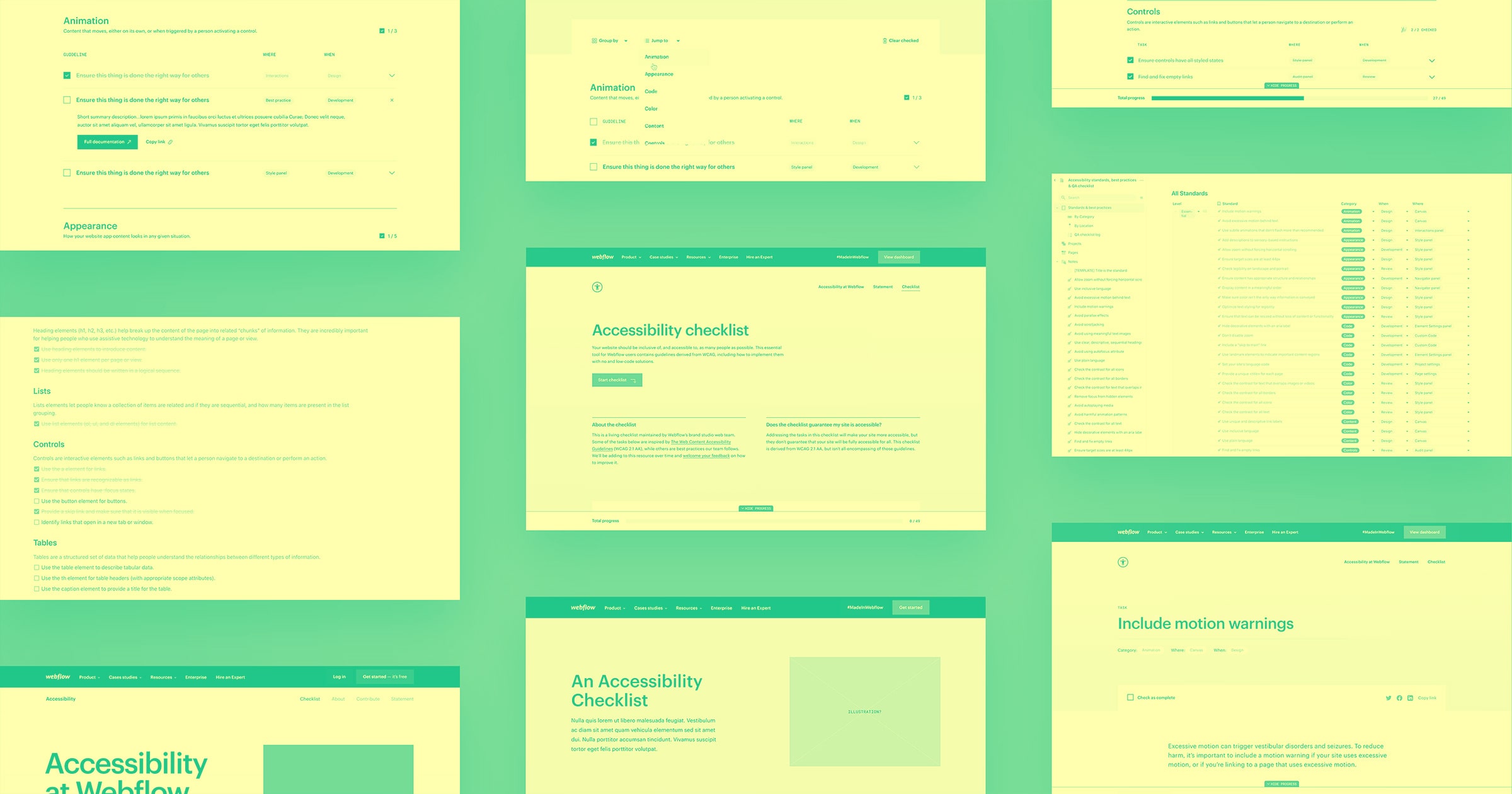Encouraging clients to use a new hosting platform can be tricky — they each have different concerns and requirements to be addressed. Here’s how I put clients’ minds at ease.
Once you’ve completed the site for your client, it’s time to present them with a solution for a hosting service. So, how can you successfully present Webflow Hosting to your client?
I introduce the answer to this question in my YouTube video, How to Sell Webflow Hosting to Clients:
Below, I elaborate on the points raised in the video to help you approach your clients with confidence.
When it comes to hosting, one size does not fit all
No, this article is not going to present you with a script for selling Webflow to your client. Why? Because not all clients are the same.
There are two types of clients I encounter — and consider — when presenting Webflow as a hosting solution:
- The client with fewer technical requirements and limited technical knowledge
- The client with more technical requirements and knowledge, such as CMS users
Below, I outline the best approaches to “selling” Webflow Hosting to both types of client. I put “selling” in quotes because, in reality, you’re probably saving them money. More on that to come.
Selling Webflow hosting to the less-technical client
Many of you are familiar with the client who knows very little about web design or web hosting. This client wants a website that looks nice and requires few changes upon completion.
So, how do you present Webflow Hosting as the best option for this client? Focus on the benefits:
1. The client gets access to the Designer and Editor
Even if your client doesn’t expect to make many changes to their site, this gives them the flexibility to tweak content, replace images, or tackle larger branding changes without relying on you or a developer!
Note: If your client wants access to the Designer, you’ll need to have them sign up for a free Webflow account and transfer the site to them. If you use the CMS, they’ll get access to the Editor even without a Webflow account.
2. The moment you publish with Webflow, your site is ready to handle traffic at any scale, and from any location
Other hosting services rely on one server, in one location, which means slow page loads — especially for visitors further from the server. These servers aren’t built to scale with a growing site, risking a server crash with too many requests. Webflow Hosting is built for speed, scalability, and reliability.
So, what might this conversation with your client look like?
You: Webflow hosting is fast, scalable, and reliable.
Them: But but but what if my site blows up overnight?
You: First, good for you. Second, Webflow can handle it. Webflow powers hosting for major companies like HelloSign, Khan Academy, and IDEO.
For many clients — the conversation will end here. But for clients with technical requirements and concerns, read on!



















The missing guide to the freelance designer's life is here
Learn everything you need to know about making the leap to freelancing, from how to find clients to how to price your services.
Selling Webflow hosting to the more-technical client
Certain clients have more technical requirements and expertise (though these don’t always go hand-in-hand). Those clients might be leery of switching hosting providers. They could have requirements around frequent updates and/or changes to their site. Great news — Webflow CMS and the Editor provide a perfect solution for these kinds of companies.
Because Webflow’s CMS can’t be exported, it’s crucial to reassure clients that Webflow Hosting is not only necessary, but ideal.
There are the two main benefits — in addition to those above — that are important to communicate:
1. Site elements that require frequent updates, like a list of portfolio companies, are easy to update in Webflow CMS
Here’s what this conversation could look like:
You: Hosting with Webflow means your whole team — from the marketing intern to your lead developer — can make changes to the site. All in one place.
Them: But we don’t even have a lead developer! We’re a VC firm!
You: Even better! Webflow’s CMS is so easy to use that your intern can make changes. (Not to say your intern isn’t perfectly capable of complex tasks but, “the easier the bettah,” as your intern maybe says.)
2. Webflow Hosting is secure
Now, there are many clients who nod at all the benefits above, and then raise one main concern: security.
Many of my clients collect data and personal information on their sites and prefer a private server with an SSL certificate. More great news — Webflow provides free SSL certificates for every site hosted by Webflow.
As a bonus, SSL will also help the site rank higher in search, which will matter to your more technically inclined clients.
Here’s how this conversation could play out:
You: I understand security is a primary concern, which is why I recommend hosting with Webflow — they provide an SSL certificate for every site. This ensures your visitors feel comfortable sharing their information with you.
Them: Great. Wait… what’s SSL?
(The more technical client will likelyknow what SSL is, but if they don’t, Webflow University’s article on SSL nicely sums up the whys and hows.)
Now … the hard part
In my experience, I encounter two main, lingering concerns after I’ve outlined the benefits of hosting with Webflow:
- Hosting on a server other than their own
- Exporting data from Webflow’s CMS
Here comes the most painful aspect of selling Webflow Hosting — and, really, presenting almost any solution to any client: admitting that it’s not perfect. (If it was, you wouldn’t be reading this article, and Webflow’s team of developers working to improve the product would be on vacation somewhere.)
If the client’s primary concern is hosting on a server other than their own, you may want to walk them through the more technical Webflow hosting features that concern security and privacy.
Now, once you’ve outline the many benefits listed above, how do you get these clients across the finish line and into the wonderful world of Webflow Hosting? Bring the conversation back to their needs and priorities — the reasons they came to you in the first place.
You want to give your client a well-designed and fully responsive website and the ability and freedom to make changes to their site at any point, without having to rely on a developer. This reframes the conversation to focus on the everlasting possibilities Webflow Hosting offers that will — in the long run — overshadow any of its limitations.
… And the ugly truth
If they’re still not convinced or, if they’re a visual learner, you might direct them to Webflow’s hosting page where there’s more detail about the benefits of hosting with Webflow. And you can find more tips in our post “What to look for in a web hosting service.”
However, no matter how confident you are in Webflow hosting and how well you sell it as the best option on their hosting menu, some clients will still opt for another service. Do not be discouraged if this is the case. There are certainly benefits to hosting on another server and you can still deliver a beautiful and functional site to your client.
Now what?
Now that you’ve identified the type of client you’re talking to and hopefully sold them on Webflow Hosting — it’s time to deliver.
Do you have other pointers that helped you sell Webflow hosting to clients? Let us know in the comments!
































